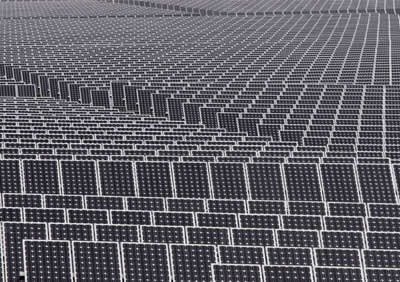 Adoption of solar energy has a simple market driving force. If people do not adopt solar energy, the planet will become unfit for human habitation. The fossil fuels are warming the planet at an increasing rate that makes life unsustainable if something does not change.
Adoption of solar energy has a simple market driving force. If people do not adopt solar energy, the planet will become unfit for human habitation. The fossil fuels are warming the planet at an increasing rate that makes life unsustainable if something does not change.
Global warming drives solar markets. Solar is perceived as the best, perhaps the only widespread solution to global warming. Every large enterprise has adopted a social responsibility strategy that makes a nod toward solving the issues of global warming and embraces renewable energy. Every person in the world is aware of the problems that global warming is bringing.
High growth is forecast for residential solar markets as solar moves to take on a measurable supply of world energy. As penetration from .3% of the world energy supply raises to over 15% in five years, residential uses of solar energy will represent a significant part of the growth. Residential solar energy represents a measure of energy independence for every household, used as hybrid systems independently of, but not completely in place of traditional grid electricity.
It is not economical to put solar generated electricity back on the grid, instead it will be used from batteries where the electricity is stored for later use. Solar systems will initially be used for lighting and charging hybrid and electric vehicles. Traditional grid electricity will only slowly be replaced. Grid hybrid electricity solutions will persist for a long time.
Demand for energy is accelerating as more of the world becomes developed. Developing countries are anticipated to double the worlds demand for energy in the next thirty years. Energy creation is becoming a central environmental issue with air quality, water quality, and flooding because of global warming having implications for the entire world.
Solar energy is a clean, reusable and affordable solution that is increasingly being recognized as the leading alternative energy source for the 21st century. While hybrid solutions are anticipated to evolve with wind, geothermal, and nuclear solutions, evolving as well, solar looks to be a dominant technology. The solar panel size is a tradeoff between the amount of money wanted to invest and the amount of electricity needed to produce. A typical US home uses 13,000kWh per year or 5kWp.
On average, the sun radiates 2.6 gigawatts (GW) of energy onto a square mile of the earth’s surface, and the most suitable way to harvest that light depends on two factors: cost and the available real estate. It does not matter that thin film solar panels are not more than 10% efficient initially, the roof of the home is not doing anything else except sit there. The sides of the home, the back fence can be used to collect solar energy and that energy can be stored for later use in vehicles and lighting.
This market segmentation is anticipated to shift as the thin film solar panels become commercially viable. The thin film solar panels will be used initially in utility applications, but also in residential applications for fueling motor vehicles. The ability to store energy from solar panels makes them a viable alternative to gasoline. The lithium and lithium ion batteries are a very dense energy storage medium providing incentive for people to put in a modest amount of thin film battery banks recharged by solar panels. As people do this, the silicon markets keep growing at a steady pace, due to the decrease in the costs for the silicon raw materials due to increased capacity for manufacturing the raw materials and increased demand for the silicon solar panels.
The thin film solar panel technology has yet to mature. It is in this segment where the phenomenal growth occurs. Versatile thin film solar products are based on unique manufacturing processes. Sputtering is used to do thin film solutions for solar cell manufacture based on defining a repeatable process. Solar cell efficiencies are in the 9 to 10% range for sputtering implementations, but roof installations are not sensitive to size restrictions.
Thin film solar sputtering technology achieves physical vapor deposition which takes an ion and accelerates it. In this manner, the sputtering is used to knock out a target, depositing uniform films at high rates.
Residential solar markets at $2.5 billion in 2007 are anticipated to reach $39.3 billion by 2014. Growth is a result of using residential solar systems to power hybrid and all electric vehicles. Units raise from 74 million solar panels in 2007 to 25.6 billion units in 2014. Growth comes not only because solar power is the cheapest power source which it will be in many cases, but because it fulfills a variety of convenience needs, not the least of which is a way to attack global warming. Every large enterprise has adopted a green strategy in response to public demand for better energy solutions.
2 replies on “Solar energy is our future”
To recharge the solar charger with solar energy, simply open it up and face in the direction of sun on a sunny day. Lydia Solutions
Solar Energy is one of the best sources of clean and green electricity. I think that we should build more efficient solar thermal power plants and solar cells. frequently. `